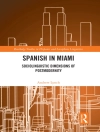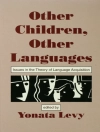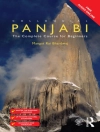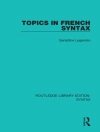This volume is the first to present a detailed survey of the systems of verb-verb complexes in Asian languages from both a synchronic and diachronic perspective. Many Asian languages share, to a greater or lesser extent, a unique class of compound verbs consisting of a main verb and a quasi-auxiliary verb known as a ‘vector’ or ‘explicator’. These quasi-auxiliary verbs exhibit unique grammatical behaviour that suggests that they have an intermediate status between full lexical verbs and wholly reduced auxiliaries. They are also semantically unique, in that when they are combined with main verbs, they can convey a rich variety of functional meanings beyond the traditional notions of tense, aspect, and modality, such as manner and intensity of action, benefaction for speaker or hearer, and polite or derogatory styles in speech. In this book, leading specialists in a range of Asian languages offer an in-depth analysis of the long-standing questions relating to the diachrony and geographical distribution of verb-verb complexes. The findings have implications for the general understanding of the grammaticalization of verb categories, complex predicate formation, aktionsart and event semantics, the morphology-syntax-semantics interface, areal linguistics, and typology.
Peter E. Hook & Taro Kageyama
Verb-Verb Complexes in Asian Languages [PDF ebook]
Verb-Verb Complexes in Asian Languages [PDF ebook]
购买此电子书可免费获赠一本!
语言 英语 ● 格式 PDF ● 网页 624 ● ISBN 9780191077432 ● 编辑 Peter E. Hook & Taro Kageyama ● 出版者 OUP Oxford ● 发布时间 2021 ● 下载 3 时 ● 货币 EUR ● ID 8040293 ● 复制保护 Adobe DRM
需要具备DRM功能的电子书阅读器












